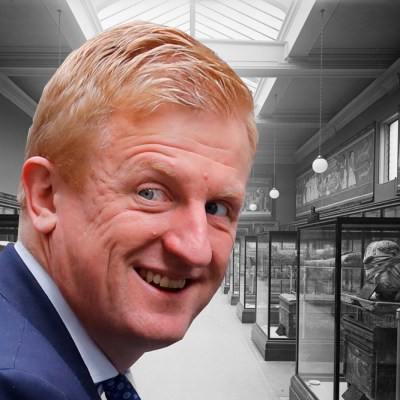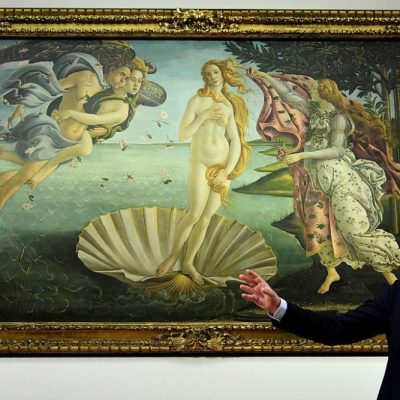For the past month, an open letter has been circulating among artists and academics in Slovenia. The letter, published on 17 November and currently bearing more than 1,000 signatures, denounces what it describes as the recently formed government’s repeated attempts to curtail cultural freedoms in the country over the past year. ‘The field of culture has been severely affected by the coronavirus epidemic, and it has been further affected by decisions at the Ministry of Culture that threaten living culture, cultural heritage, professionalism and autonomy of decision-making bodies and cultural institutions,’ the open letter reads.
The letter, addressed to the Minister of Culture Vasko Simoniti, criticises the government for its tactics in replacing two prominent museum directors in Ljubljana – Zdenka Badovinac, director of the Moderna Galerija since 1993, and Matevz Celik, director of the Museum of Architecture and Design since 2010 – despite their excellent international and domestic track records.
During Badovinac’s tenure at the Moderna Galerija, she oversaw hundreds of exhibitions and projects with a particular interest in representations of the body in Eastern European art. Earlier this year, she was awarded the 2020 Igor Zabel prize, with the jury recognising Badovinac for her ‘outstanding […] contribution to Eastern Europe and global art history’. After advertising for her position at Moderna Galerija three times, the ministry finally announced last month that a new interim director had been found, the poet and art historian Robert Simonisek.
‘It is absolutely political,’ Badovinac says about her removal as director of Moderna Galerija. ‘There are very similar scenarios playing out in Hungary and Poland,’ she adds, where ‘alongside the targeting of contemporary art, or any other cultural context that harbours social critique, we – meaning the artistic community – are seen as a threat.’
Zdenka Badovinac, former director of the Moderna Galerija in Ljubljana, photographed in 2015. Photo: Jure Makovec/AFP via Getty Images

Celik’s words chime with those of Badovinac. He says that two members of the three-person jury tasked with selecting his successor were appointed by the ruling Slovenian Democratic Party, led by the prime minister Janez Jansa; the third was a low-level bureaucrat. Pre-existing criteria for recruitment, in particular the requirement of previous professional experience, were eliminated. At the same time, the opinions of museum experts were simply ignored. ‘The goal is to shift culture towards a conservative bent and to replace all leading and influential personalities who lead key cultural institutions,’ he says.
In the 30 years since the country’s founding after the break up of the former-Yugoslavia in 1990, Slovenia has produced numerous cultural dignitaries, from the political art collective Neue Slowenische Kunst (NSK) to the industrial-rap-metal band Laibach, and the philosopher and cultural critic Slavoj Zizek. But under the country’s new government – formed in March 2020 through a coalition with other right-wing and centrist parties, replacing a centre-left coalition – many say that Slovenia is becoming a populist and nationalist state.
Violeta Tomic, a Slovenian television presenter and actor turned opposition politician, is one of the signatories of the open letter. She presently serves as a deputy in the National Assembly, where she is acting head of the Parliamentary Committee on Culture. ‘Every week the Minister of Culture is bombarding us with decisions like the withdrawal of artistic status from the rap musician Zlatko,’ she says, ‘or the cancelling of major subsidies for STD [the Slovenian public broadcaster similar to the BBC in the UK], and the cancelling of financing for film production, not to mention the recent firing of directors of several major cultural institutions.’
The open letter also takes aim at a project to build a new museum, for which the government has allocated funds in its draft budget for 2022. The Museum of Slovenian Independence, it says, will be a ‘propaganda institution, promoting a nationalist narrative about the past aimed mainly at buttressing the ideological agenda of the ruling Slovene democratic party’.
In a press release published on 13 December the government says that these characterisations are incorrect. It claims that the Museum of Independence ‘will be subject to international standards and curated by professional historians with no political affiliations, to ensure proper representation of Slovenia’s struggle to break loose from the communist dictatorship’.
On the recent removal of directors, the Ministry of Culture adds that for decades appointing new directors has been routine during left-wing governments. ‘It is a political process, but a process that requires regular transitions of power, which Slovenia sadly lacked for most of its independent history,’ the statement reads.
That said, many figures in the country remain convinced that current government policy is resulting in negative outcomes for the arts sector. ‘The situation, broadly speaking, is very worrisome,’ says Hana Ostan Ozbolt, director of the ULAY Foundation in Ljubljana. She says that the situation is punctuated by a climate of disdain for artists, art professionals, academics and curators in the field. ‘The new normal is some twisted Slovenian proto-nationalism that elevates historical revisionism to deliberately target and weed out contemporary art professionals. We are at a point of no return,’ she says.


